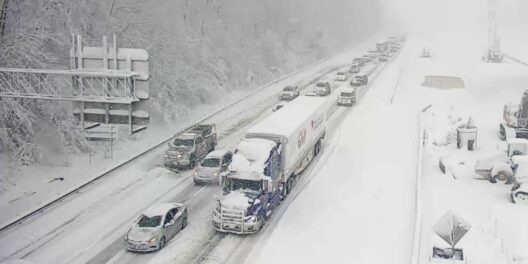The discourse surrounding climate change and its multifaceted impacts often overlooks an unexpected contributor: animal flatulence. While the imagery conjured by the phrase “animal farts” may elicit chuckles or bemusement, the underlying scientific implications are anything but trivial. As concerns mount regarding greenhouse gas emissions, it is imperative to delve into the role that livestock and other animals play in exacerbating our planet’s predicaments.
To fully comprehend the ramifications of animal farts on global warming, we must demystify the science behind this phenomenon. When animals digest food, particularly those rich in fiber, fermentation occurs within their gastrointestinal tracts. This biological process produces a suite of gases, including methane and nitrous oxide, both of which are potent greenhouse gases (GHGs). Methane, for instance, has a global warming potential at least 25 times greater than carbon dioxide over a 100-year period. It is not merely a minor irritant; it is a formidable force in the climate crisis.
Farm animals, particularly ruminants like cows and sheep, are especially notorious for their methane emissions. The intricate nature of their digestive systems allows for an extensive fermentation process, yielding significantly more methane than non-ruminants. A single cow can produce upwards of 100 kilograms of methane per year. With billions of livestock populating our planet, the cumulative impact is astounding, amounting to an estimated 14.5% of all human-induced greenhouse gas emissions globally. The juxtaposition of ludicrous images associated with these emissions against the grave urgency of climate action beckons a shift in perspective.
Moreover, the problem is compounded by agricultural practices. The demand for livestock products continues to rise, leading to intensified livestock farming. This escalation not only amplifies methane production but also results in a myriad of associated environmental challenges, including deforestation, loss of biodiversity, and water scarcity. The interplay between livestock rearing and ecological degradation paints a stark picture — our dietary choices are inextricably linked to planetary health. As we ponder the ramifications of animal farts, we can begin to appreciate the larger tapestry of events leading to our current environmental plight.
But what about the emissions from other animals? While ruminants may be the poster children for greenhouse gas emissions, other species contribute as well. For instance, pigs produce a considerable amount of both methane and nitrous oxide, while smaller animals, such as dogs and cats, also have a carbon footprint, although less pronounced. Intriguingly, wild animals contribute to emissions through natural processes, yet these are often part of a balanced ecosystem that includes mechanisms for renewable cycles of life and death. The stark contrast between wild and domesticated species underscores the consequences of our anthropogenic impact.
One could posit that the elephant in the room is the economic aspect of livestock production versus environmental restoration. Agriculture is intricately tied to socio-economic structures, and any proposed changes could have far-reaching implications. Transitioning away from traditional livestock farming may seem unfeasible at first glance, yet there exists an opportunity to reconsider our culinary habits. Plant-based diets—though not a panacea—might mitigate some of the destructive patterns we’ve woven into our agricultural tapestry.
Such dietary shifts could lead to a remarkable reduction in the demand for livestock, thus addressing not only the problem of animal emissions but also reducing land usage and water consumption that beleaguer the agricultural sector. The benefits of embracing more plant-based nutrients extend beyond individual choice; they ripple outwards, fostering a regenerative relationship with our environment.
As we embark on this journey toward ecological stewardship, it is essential to innovate within agricultural paradigms. Technological advancements, such as feed additives that reduce methane production, could be instrumental in abating the emissions from livestock. Research is ongoing, and the potential for biotechnological solutions presents an avenue for addressing this challenge without undermining food security. The integration of traditional ecological knowledge with modern scientific inquiry may hold the key to fostering a sustainable future.
Additionally, a regulatory framework promoting sustainable practices in livestock farming could catalyze substantial changes. Policies incentivizing lower methane emissions, alongside support for farmers transitioning to more sustainable practices, may foster a paradigm shift that recognizes the environmental costs associated with animal agriculture. This change, however, necessitates collective action from consumers, businesses, and governments alike — a daunting but necessary task in the overarching battle against climate change.
Acknowledging the significance of animal emissions should not deaden our spirits; rather, it should ignite a fervor for change. When viewed through a lens of curiosity and responsibility, we can engage with the facts and adapt our behaviors accordingly. Understanding that animal flatulence is not merely an amusing subject but a part of a larger existential conversation allows us to reframe our approach to environmental stewardship.
As we forge ahead, we are bound to confront the interconnectedness of our systems on this planet. We must ask ourselves: Are our dietary choices and agricultural practices contributing to a sustainable future, or are they shackling us to the precipice of disaster? It is within this inquiry that we unearth the real challenge — and subsequently, the promise — that our collective actions hold in shaping the fate of our environment.
In conclusion, the conversations surrounding animal farts might appear trivial on the surface, yet they hold profound implications for our planet’s future. By embracing knowledge, exploring alternatives, and championing sustainable practices, we can influence the trajectory of our shared home. Ultimately, it is not just about mitigating the gases released by animals; it is about cultivating a harmonious relationship with our planet for generations to come.








